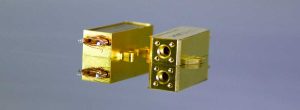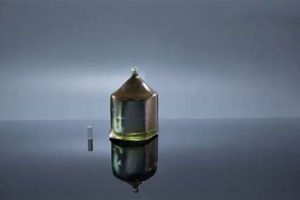Introduction
In the realm of nonlinear optics, second-harmonic generation (SHG) plays a pivotal role. Two crystals that have been at the forefront of this technology are Lithium Iodate (LiIO3) and Silver Gallium Sulfide (AgGaS2). In this comprehensive analysis, we will delve into the properties, performance, and applications of these two crystals, highlighting their unique characteristics and suitability for specific applications.
Overview of Second-Harmonic Generation
The Principle of SHG
Second-harmonic generation is a nonlinear optical process where two photons interact with a nonlinear material, converting them into a single photon with twice the energy, or equivalently, half the wavelength. This process is instrumental in various scientific and industrial applications.
Lithium Iodate (LiIO3) in SHG
LiIO3, or Lithium Iodate, has emerged as a prominent nonlinear optical crystal in the field of second-harmonic generation (SHG). Its unique characteristics have made it a preferred choice for various applications, ranging from medical imaging to telecommunications.
One of the standout features of LiIO3 is its wide transparency range, extending from the ultraviolet to the mid-infrared spectrum. This broad range allows for the utilization of LiIO3 in diverse applications, accommodating different wavelength regions. Whether it’s in the field of laser technology, where frequency doubling is essential, or in advanced imaging systems requiring precise wavelength control, LiIO3’s wide transparency range offers unparalleled flexibility.
The high damage threshold of LiIO3 further enhances its appeal. In applications where intense laser beams are employed, such as in industrial manufacturing or medical procedures, the material’s ability to withstand high power levels without degradation is crucial. LiIO3’s resilience ensures consistent performance and longevity, making it a reliable choice for demanding applications.
LiIO3’s excellent phase-matching conditions contribute to its efficiency in SHG. Phase matching is a critical factor in nonlinear optics, as it ensures that the interacting waves remain in phase, maximizing the conversion efficiency. LiIO3’s ability to maintain phase matching over a wide range of wavelengths and temperatures sets it apart from other nonlinear materials. This characteristic enables the design of more compact and efficient devices, reducing the overall system complexity.

In the medical field, LiIO3’s properties have been leveraged for advanced imaging techniques, such as optical coherence tomography (OCT). Its ability to efficiently generate second harmonics enables high-resolution imaging, providing detailed insights into biological tissues. This has revolutionized diagnostics and treatment planning, contributing to more personalized and effective healthcare.
In telecommunications, LiIO3 has found applications in wavelength conversion and signal processing. Its nonlinear characteristics facilitate the manipulation of optical signals, enabling more efficient data transmission and enhancing network performance. As the demand for high-speed communication continues to grow, LiIO3’s role in enabling next-generation networks becomes increasingly significant.
In conclusion, Lithium Iodate’s unique properties, including its wide transparency range, high damage threshold, excellent phase-matching conditions, and versatility across various applications, have solidified its position as a preferred nonlinear optical crystal in SHG. Its contributions to fields like medical imaging and telecommunications underscore its importance in shaping the future of technology. Whether it’s enhancing the precision of medical diagnostics or enabling faster and more reliable communication, LiIO3’s impact is far-reaching and continues to drive innovation across multiple domains.
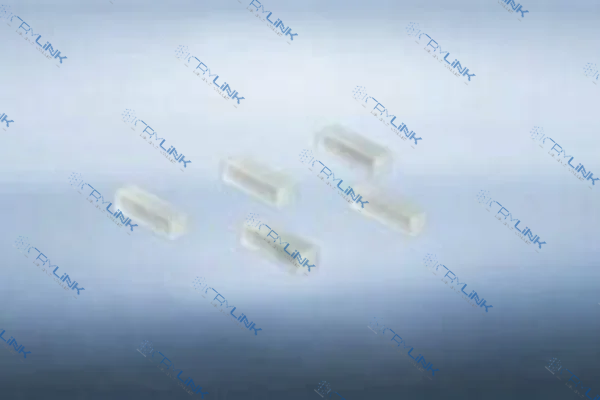
Silver Gallium Sulfide (AgGaS2) in SHG
Silver Gallium Sulfide (AgGaS2) has emerged as a powerful nonlinear optical crystal, particularly noted for its performance in the mid-infrared region. Its unique properties have made it an essential material in various applications, including spectroscopy, remote sensing, and more.
One of the defining characteristics of AgGaS2 is its broad phase-matching capabilities. Phase matching is a critical condition in nonlinear optics, ensuring that the interacting waves remain in phase to maximize conversion efficiency. AgGaS2’s ability to achieve phase matching across a wide range of wavelengths and temperatures sets it apart from other materials. This broad phase-matching capability allows for more flexible system design and optimization, accommodating various applications and operational conditions.
AgGaS2’s high nonlinear coefficient further enhances its performance in second-harmonic generation (SHG). This property allows for more efficient frequency conversion, translating into higher output power and better system performance. In applications where efficient energy conversion is paramount, such as in laser systems or optical signal processing, AgGaS2’s high nonlinear coefficient provides a significant advantage.
The mid-infrared region, where AgGaS2 excels, is of particular interest in various scientific and industrial domains. In spectroscopy, the mid-infrared range is often used to study molecular vibrations and rotations, providing valuable insights into chemical composition and structure. AgGaS2’s efficiency in this wavelength region enables more precise and sensitive measurements, contributing to advancements in fields like environmental monitoring, pharmaceuticals, and materials science.
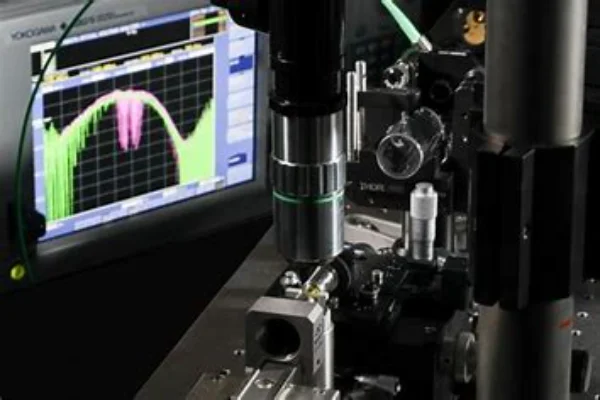
In remote sensing, AgGaS2’s performance in the mid-infrared region has been leveraged for applications such as atmospheric monitoring and geological exploration. Its ability to efficiently convert frequencies in this range allows for the detection and analysis of specific compounds and materials, providing critical data for environmental protection, resource management, and more.
AgGaS2’s impact extends to emerging technologies as well. In the field of quantum communication, its nonlinear properties are being explored to enable secure and efficient data transmission. Its potential in this cutting-edge domain underscores AgGaS2’s versatility and its role in shaping future technologies.
The industrial applications of AgGaS2 are equally diverse, ranging from laser-based manufacturing to medical procedures. Its efficiency in frequency conversion enables more precise control and higher processing speeds, enhancing productivity and quality across various manufacturing processes.
In conclusion, Silver Gallium Sulfide’s unique properties, including its broad phase-matching capabilities, high nonlinear coefficient, and exceptional performance in the mid-infrared region, have positioned it as a vital material in SHG. Its contributions to fields like spectroscopy, remote sensing, and industrial manufacturing highlight its multifaceted impact. Whether it’s enabling more accurate environmental monitoring or advancing next-generation communication technologies, AgGaS2’s influence is profound and continues to drive innovation and progress across a wide array of disciplines. Its role in shaping the future of technology is undeniable, and its potential continues to inspire new applications and discoveries.
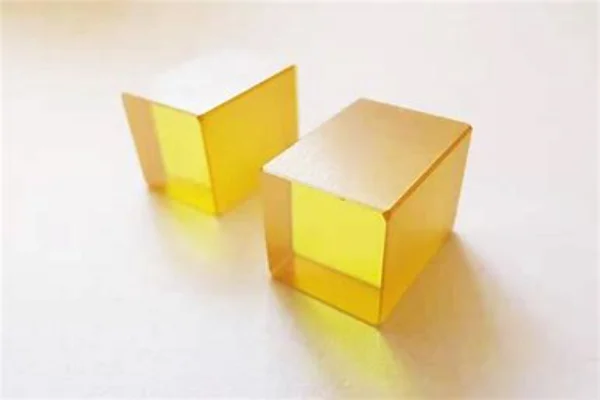
Comparative Analysis of LiIO3 and AgGaS2 in SHG
The comparative analysis of Lithium Iodate (LiIO3) and Silver Gallium Sulfide (AgGaS2) in the context of second-harmonic generation (SHG) reveals distinct characteristics and advantages that make each material suitable for specific applications.
LiIO3’s excellence in the visible and near-infrared regions is attributed to its wide transparency range and excellent phase-matching conditions. These properties make it a versatile choice, suitable for a broad array of applications. Whether it’s in medical imaging, where high-resolution visualization is essential, or in telecommunications, where precise wavelength control is required, LiIO3’s flexibility makes it a preferred choice. Its high damage threshold further enhances its appeal, ensuring consistent performance even under demanding conditions.
On the other hand, AgGaS2’s standout performance in the mid-infrared range sets it apart from other nonlinear materials. Its broad phase-matching capabilities and high nonlinear coefficient enable efficient frequency conversion in this specific wavelength region. This makes AgGaS2 particularly valuable in applications such as spectroscopy and remote sensing, where the mid-infrared range is essential for detailed analysis and detection. Its unique efficiency in this region opens up opportunities for innovative applications and technological advancements.
The choice between LiIO3 and AgGaS2 is not merely a matter of preference but must be aligned with the specific needs and requirements of the application. For applications requiring versatility across various wavelengths, LiIO3’s wide transparency range offers the flexibility needed. In contrast, for applications focused on the mid-infrared region, AgGaS2’s specialized efficiency provides a targeted solution.
This comparative analysis also highlights the complementary nature of these two materials. While each excels in specific regions, together they cover a broad spectrum, from the visible to the mid-infrared range. This complementary relationship opens up possibilities for hybrid systems, where both materials are utilized to achieve optimal performance across a wide wavelength range.
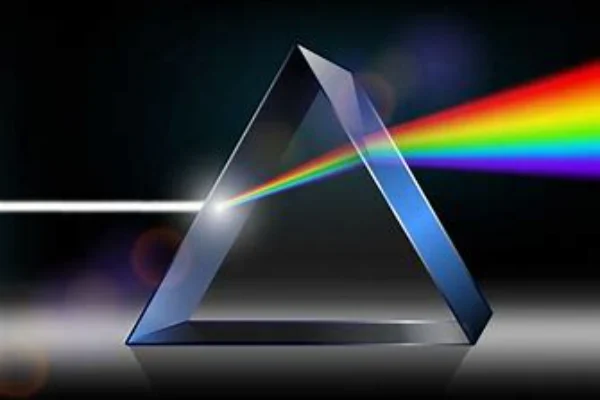
In the ever-evolving field of nonlinear optics, the selection of the right material is crucial for achieving desired performance and efficiency. Understanding the unique characteristics and advantages of LiIO3 and AgGaS2, and their suitability for specific applications, provides valuable insights for researchers, engineers, and industry professionals. It guides the design and optimization of systems, ensuring that the selected material aligns with the application’s goals and requirements.
In conclusion, the comparative analysis of LiIO3 and AgGaS2 in SHG is not just an academic exercise but a practical guide for real-world applications. It underscores the importance of material selection in achieving optimal performance and highlights the unique contributions of these two materials in shaping the future of nonlinear optics. Whether it’s enhancing medical diagnostics, enabling environmental monitoring, or advancing manufacturing processes, the choice between LiIO3 and AgGaS2 plays a pivotal role in driving innovation and progress in various domains. Their distinct characteristics and complementary relationship continue to inspire new applications and discoveries, solidifying their position as vital materials in the field of second-harmonic generation.
Conclusion
In the ever-evolving field of nonlinear optics, both Lithium Iodate (LiIO3) and Silver Gallium Sulfide (AgGaS2) have carved their niches. While LiIO3 offers versatility across a wide range of wavelengths, AgGaS2’s prowess in the mid-infrared region is unparalleled. The comparative analysis provided herein serves as a guide for researchers and industry professionals in selecting the appropriate crystal for their specific second-harmonic generation applications.
FAQs
- What is Second-Harmonic Generation (SHG)?
- SHG is a process where two photons interact with a nonlinear material to produce a photon with twice the energy.
- Why is LiIO3 used in SHG?
- LiIO3 is used for its wide transparency range and excellent phase-matching conditions.
- How does AgGaS2 differ from LiIO3 in SHG?
- AgGaS2 is more efficient in the mid-infrared range, while LiIO3 is versatile across various wavelengths.
- Can both LiIO3 and AgGaS2 be used interchangeably?
- The choice between LiIO3 and AgGaS2 depends on the specific application and required wavelength range.
- What are the main applications of these crystals in SHG?
- LiIO3 is used in medical imaging, telecommunications, while AgGaS2 is used in spectroscopy and remote sensing.



